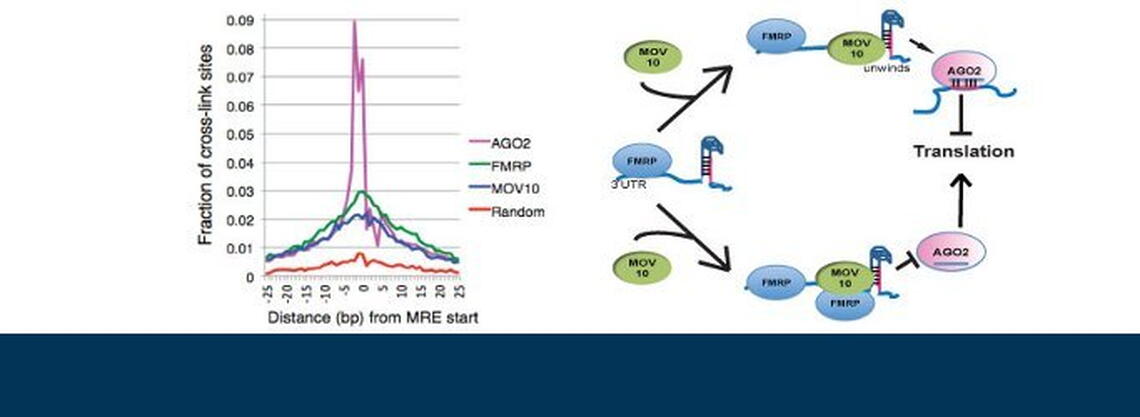
The Ceman laboratory, with lead authors Phil Kenny and Miri Kim, have shown that FMRP is able to facilitate or suppress the translation of a subset of its target mRNAs by its interaction with the RNA helicase MOV10.
The Fragile X Mental Retardation Protein (FMRP), encoded by the FMR1 gene, is a key factor in establishing normal intelligence during brain development. FMRP is known to regulate localized protein synthesis in neurons, necessary for maintaining synaptic plasticity and dynamics at dendritic spines. Fragile X Syndrome, the clinical consequence of a loss of FMRP function, is the leading cause of inherited intellectual disability.
FMRP is an RNA binding protein, binding approximately 4% of all mRNA in the brain. However, how FMRP acts to regulate these mRNAs is poorly understood.
A study led by Dr. Stephanie Ceman has identified a protein, MOV10, which interacts with FMRP to facilitate or hinder the accessibility of the RNA Induced Silencing Complex (RISC), a complex necessary for microRNA-mediated translational regulation. The researchers findings reveal that the expression of bound mRNA can be increased or decreased depending upon FMRP’s spatial interaction with MOV10, elucidating a novel mechanism that could lead to a target in future therapeutics.
